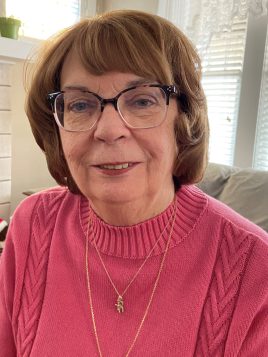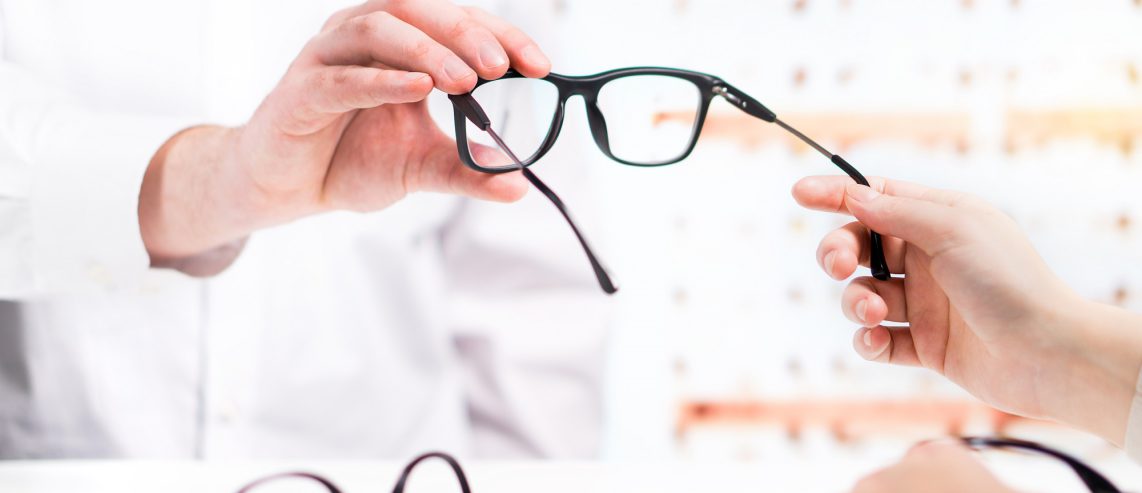Linda Cetra of Pittsburgh’s Friendship neighborhood started wearing glasses in the fifth grade, and every year her vision got a little worse. As a young adult, she was diagnosed with dominant optic atrophy (DOA), a hereditary, progressive optic nerve disease. It’s estimated that just one in 50,000 people in the United States has DOA.
Linda, now 78, is determined that her low vision won’t stop her from living the life she wants.
Never Miss a Beat!
Subscribe to Our HealthBeat Newsletter!
Thank you for subscribing!
You can now select the specific newsletters you'd like to receive.
You are already subscribed.
Subscribe to more newsletters in our email preference center.
Sorry, an error occurred. Please try again later.
Get Healthy Tips Sent to Your Phone!
The Path to the UPMC
 Dominant optic atrophy (DOA) is a rare optic nerve disorder that worsens over time. DOA leads to impaired or low vision — a chronic condition that cannot be corrected with glasses, contacts, or even surgery.
Dominant optic atrophy (DOA) is a rare optic nerve disorder that worsens over time. DOA leads to impaired or low vision — a chronic condition that cannot be corrected with glasses, contacts, or even surgery.
Linda was in her mid-30s when she was diagnosed with DOA. She had narrowed and blurred vision along with limited peripheral vision. Her ophthalmologist explained there was no cure and that her vision would likely continue to decline.
Linda refused to let DOA define her life. “I decided to keep doing the things I loved — taking care of my family, working, sewing, and baking,” she says.
In her 40s, Linda worked in a doctor’s office, but her vision reached a point where she could no longer read small print. Open to trying different technologies to compensate for her low vision, she began using a specialized device that displayed magnified images so she could see the information and type it into the computer.
As Linda’s eyesight worsened, she knew she needed more help. She went to see William Smith, OD, a low vision specialist at the UPMC Vision Institute, a little over a year ago. “Dr. Smith spent a lot of time with me — more than any other eye doctor,” says Linda. “He believed there were devices that could help me see a little better.”
Dr. Smith recommended equipment that might help Linda and referred her to Holly Stants, MS, OTR/L, SCLV, CLVT, to get started. Holly works in collaboration with the UPMC Department of Ophthalmology and has specialized training as a certified low vision occupational therapist.
“In our low vision rehabilitation clinic, we look at how the patient is managing overall,” says Holly. “We ask questions about whether they’re able to engage in things that are meaningful to them. We also ask about daily life: Can they manage their medicine? Are they falling? Then we ask, ‘How can we get you to that place where you are engaging again and where life has more meaning?'”
The Solution
For the first few months, Linda and Holly met twice a week, trying different tools to compensate for her low vision. “Technology is improving by leaps and bounds. It’s also becoming more accessible for patients,” says Holly. “High-tech devices can help magnify or sharpen vision so patients can participate in activities that are important to them.”
“The functionality we can provide to patients is so very important,” says Holly, who introduced Linda to assistive devices for reading and tasks like cooking and laundry. She
now uses a 9″ x 12″ iPad that offers built-in low vision options. “My computer tablet is a blessing,” says Linda. “I can see recipes and read books by making the text larger and changing the contrast.” And when Holly learned Linda couldn’t watch TV unless she was two feet from the screen, she introduced her to high-tech hands-free magnifying glasses that can make the screen look twice as big. “The image may not be super sharp,” says Linda, “but it’s definitely an improvement.”
Linda remembers Dr. Smith saying that her positive attitude and willingness to learn would be very important to her success. “I’ve only had these devices since August, so they’re rather new to me,” she says. “While they’re not always easy, I’m committed to learning how to use them.”
Connecting with Local and State Resources
Low vision rehabilitation services provides support for many low vision needs, including:
- Reading.
- Navigating low lighting, glare, and contrast.
- Technology/cellphones.
- Computers/tablets.
- Medication management.
- Home management.
- Fall prevention.
Holly also linked Linda to a variety of local and state vision resources, including Blind & Vision Rehabilitation Services of Pittsburgh, Pittsburgh Carnegie Library for the Blind and Physically Handicapped, and the Pennsylvania Office of Vocational Rehabilitation.
“100% Worth It”
Linda credits Dr. Smith and Holly’s expertise — and the compassionate care she received at UPMC— for increasing her independence and giving her the tools to achieve a greater quality of life. “I’ve never wanted to give up. My life isn’t going to go away just because I can’t see,” she says.
With their guidance and support, Linda is back to baking and crafting — and she has plans to try embroidery. “My husband tells me, ‘Why not try?'” says Linda. “That’s been my attitude all along.”
About UPMC Rehabilitation Institute
The UPMC Rehabilitation Institute offers inpatient, outpatient, and transitional rehabilitation, as well as outpatient physician services so that care is available to meet the needs of our patients at each phase of the recovery process. Renowned physiatrists from the University of Pittsburgh Department of Physical Medicine and Rehabilitation, as well as highly trained physical, occupational, and speech therapists, provide individualized care in 12 inpatient units within acute care hospitals and over 80 outpatient locations close to home and work.
About UPMC Vision Institute
The UPMC Vision Institute is a national leader in the treatment of eye diseases and disorders. We seek to improve and restore your vision to help your quality of life, diagnosing and treating a wide range of conditions in both children and adults. Our treatments include both surgical and nonsurgical options. We also offer routine eye screenings and have full-scale optical shops. Find an eye expert close to you.
